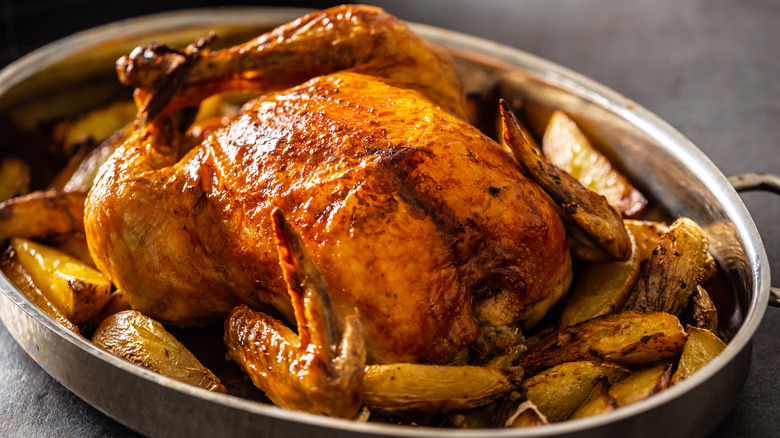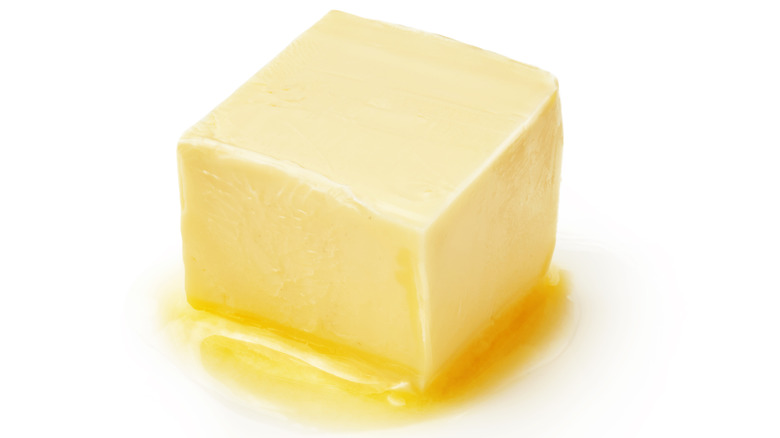The Absolute Best Type Of Butter For Roasting Chicken
There's nothing like a plate of roasted chicken straight from the oven. Roasted chicken is tender, juicy, and extremely versatile. A traditional roast chicken is made by putting a whole chicken on a roasting rack, slathering it with seasonings and olive oil, and popping it in the oven for a few hours to roast. If you only want to make breasts or thighs, it's simple enough to roast those up, too. While roasting chickens with oil are delicious, using better never hurts.
If the idea of coating an entire bird with butter, a la Thanksgiving dinner style, seems a bit overwhelming, don't worry. When roasting chicken with butter, you're only working with one cut of meat, typically the breasts. The combination of cooking with butter and oil helps to fry the chicken, which gives a crispy outer texture, while still remaining moist on the inside, per Renee's Kitchen Adventures.
When it comes to choosing the butter for the chicken, you'll want to make sure you choose the correct kind to achieve the best flavor and texture.
Butter makes everything better
When roasting chicken, it's best to use cultured butter. Cultured butter is treated with cultures that ferment before being churned into butter (via Vermont Creamery). This butter is richer due to its higher level of butterfat. It also has a slightly tangy flavor due to the cultures.
Cultured butter is especially great for making roasted chicken breasts because of its higher smoke point. You can combine butter with olive oil to pan-fry the chicken breasts while making a rich sauce to spoon over top. If the butter begins to burn before the dish is done, simply take it off the heat and spoon the warm butter over the chicken.
You can definitely tell you're eating cultured butter due to the intense creaminess and almost luxurious taste. It's definitely an upgrade from standard butter. It can be used as a straight substitute for regular butter in all recipes. You can find cultured butter in the grocery store, though it will be more expensive than non-cultured butter. You can also try your hand at making cultured butter, using cultured buttermilk and non-ultra-pasteurized heavy cream, notes A Beautiful Plate.

